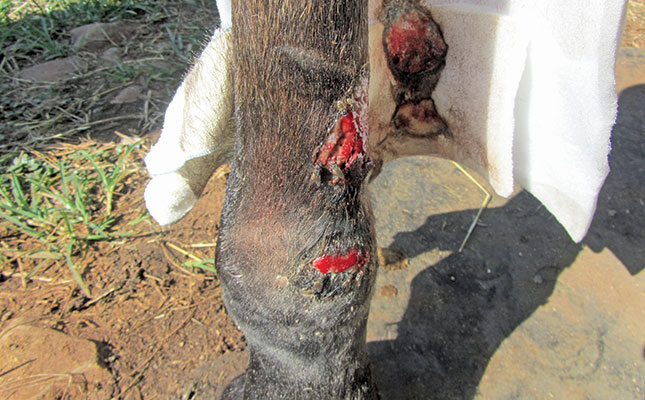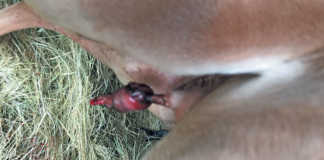
Photo: Dr Mac
Horses are prone to injury, and all horse owners or carers should therefore know how to clean and disinfect a wound, says Dr Mac.
Two thousand years ago, horse owners cleaned their animals’ wounds with seawater and honey.
The reason for the success of these ingredients as a wound treatment is osmosis, which is the movement of water across a semi-permeable membrane to equalise the concentration of molecules.
The concentration of salt is higher in seawater than in most bacteria; in the same way, the concentration of sugar is higher in honey than in the surrounding environment.
Living cells, including bacteria, generally have a higher concentration of molecules than the surrounding environment, so water moves into the cell.
When the surrounding environment has a higher concentration of salt or sugar than the bacterium, water moves from the bacterium into the environment, effectively collapsing the bacterial cell.
If saline is used for cleaning wounds, the osmotic effect pulls serum from the tissues, floating off dirt and debris, and loosening dead cells and pus from the underlying tissues.
The sugar in honey, in addition to its osmotic effect on bacteria, also provides energy for leukocytes to proliferate and mediate cell repair by producing cytokines, which stimulate healing.
Salt or seawater?
Seawater contains many ingredients other than salt. Two thousand years ago, it might have been fairly clean, but these days it contains substantial quantities of sewage and other pollutants, so it’s preferable to use a sterile solution to clean wounds.
For a fresh wound, add one teaspoon (5g) to 250ml of boiled or sterile water. Iodised salt seems to work even better than plain table salt.
If you are treating a wound that is already swollen and full of pus, use two teaspoons of salt per cup to increase the osmotic effect and dissolve the pus and muck. This may sting a little more than the more diluted solution.
A saline solution will also dissolve clotted blood on the hair around the wound, reducing the number of flies.
Using sugar
Although honey contains propolis and other chemicals with anti-inflammatory and antibacterial properties, it may also include undesirable pollutants such as Clostridium botulinum spores, pollen, dust and organic molecules.
The composition of honey is also highly variable depending on the climate and types of plants that the bees visit. Its basic components, however, are fairly close to that of white sugar (brown sugar may also contain unknown organic molecules).
Honey contains 40% fructose and 30% glucose, while sugar is 50% fructose and 50% glucose. As glucose is probably the more active ingredient, less sugar is needed than honey when treating a wound. Being granular, sugar is also easier to apply to an open wound than honey, and is cheaper.
Cleaning the wound
Wash the wound with saline until clean, rinse with sterile water, and pat on the sugar granules.
If possible, cover the wound to protect it from flies. Repeat this two to four times on the first day, then once or twice the next day.
If the wound requires veterinary attention, your vet will probably administer a long-acting antibiotic, such as penicillin or streptomycin, intramuscularly on the first day, followed by oral sulphonamides for five to eight days thereafter to prevent deep-seated infection.
Dr Mac is an academic, a practising equine veterinarian and a stud owner.












